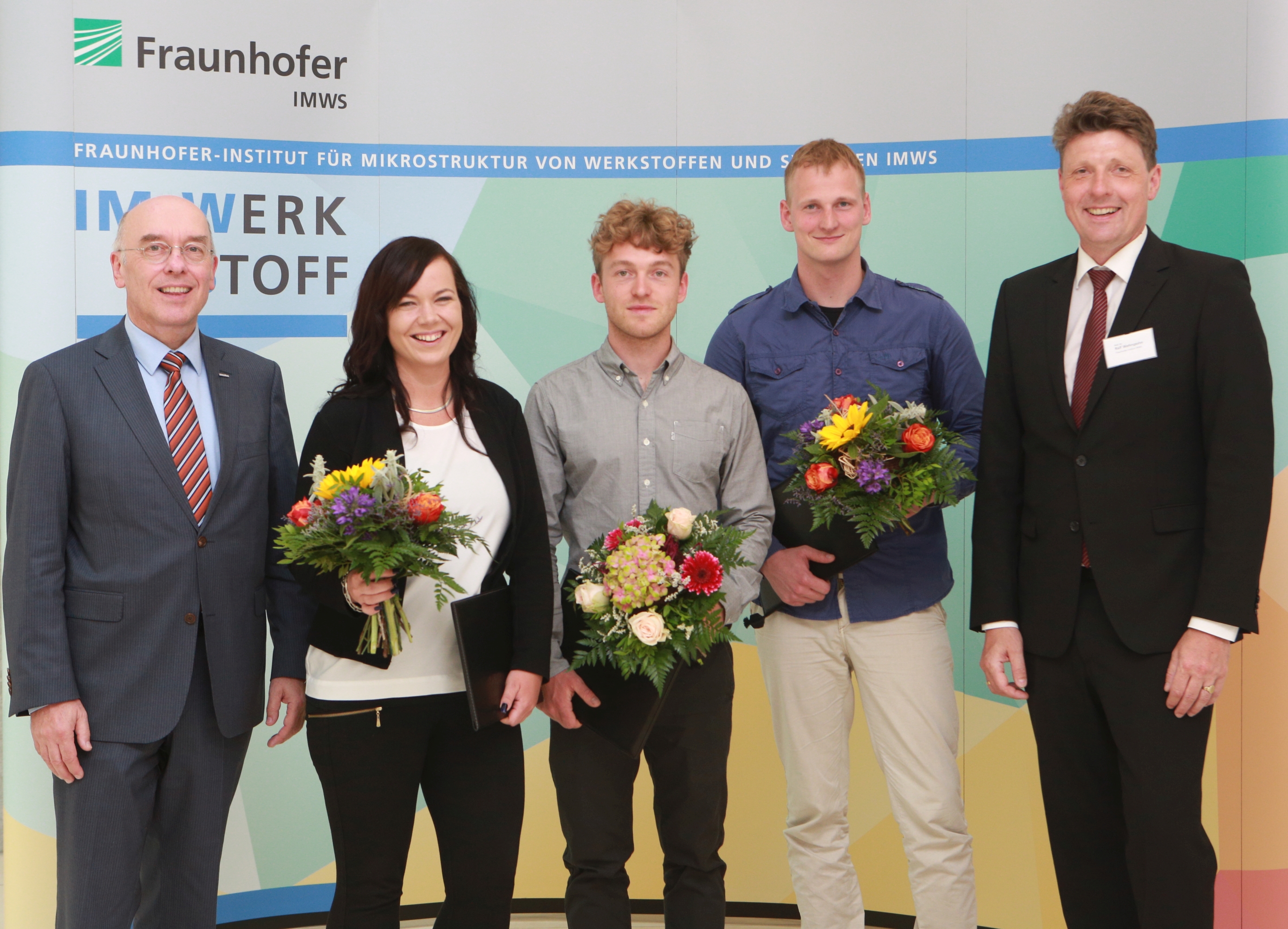Rico Meier awarded the Materials Prize (‘Werkstoff-Preis’) by Schott AG
Rico Meier has been awarded the Materials Prize 2017 by Schott AG for the ultrasonic examination of the mechanical properties of copper bands for photovoltaic modules in critical areas of the production chain. The 33-year-old physicist received the award with 1500 euros of prize money as part of the Advisory Board meeting at the Fraunhofer Institute for Microstructure of Materials and Systems IMWS in Halle (Saale). His investigations make the destruction-free manufacture of copper band possible in the production chain and represent an increase in terms of quality and continuity.

All graduates and doctoral candidates associated with Fraunhofer IMWS and early career researchers at the Institute were able to apply for the prize, which was awarded for the second time. A jury selected the three finalists, who presented their results to the Advisory Board in short presentations, from the many applicants based on scientific achievements, degree of innovation, professionalism, and application relevance. The members of the Advisory Board then chose a winner.
Dr. Roland Langfeld, Research Fellow for central research at SCHOTT AG and Chairman of the Advisory Board at Fraunhofer IMWS, awarded the prize. »The diversity of the submitted contributions clearly shows how important material research is for innovative solutions in industry. I was also impressed by the high scientific level of the work at Fraunhofer IMWS. The research findings by Rico Meier demonstrate how, with excellent knowledge of the microstructure level, innovative solutions can be created that are not only required in industry but also contribute to increased resource efficiency,« says Langfeld.
Copper bands are used in photovoltaic modules and in power electronics. The manufacturing process significantly influences the properties of the copper material: irregularities such as different drawing and rolling processes or varying annealing conditions cause the material to change. When the copper band cools following the soldering process, thermomechanical tension occurs, which is transferred to the solar cells and can thus damage the photovoltaic modules over the long term.
Rico Meier has managed to develop characterization methods with the aid of sound waves (Lamb waves), which monitor the mechanical properties of the copper during the manufacturing process in order to make reliable statements about its quality. This method is not limited to characterizing metallic materials, as interesting applications also arise for glass and ceramics.
When the Lamb waves penetrate the sample, the mechanical properties of the material down to the microstructure level become apparent due to the sound wave-transporting properties. The physicist was thus able to determine the elastic properties, the acoustoelastic constant (i.e. the voltage dependence of elastic waves), and the grain size of the copper structure with Lamb waves. This allows statements to be made regarding the annealing state and the hardening of the copper band and how suitable the material is for further processing can be verified.
The physicist developed three methods for this in order to test solar cell connectors on an industrial scale. Method one determines the elasticity module and the Poisson number for the material with the aid of a dispersion analysis. Method two assesses the microstructure with the aid of acoustoelasticity, and a third method uses the sound scattering of the Lamb waves on the structure of the material to determine grain size. Overall, these procedures make it possible to monitor the mechanical properties of the copper in order to ensure a consistently high level of quality in production and thus improve the reliability of photovoltaic modules.
»I am delighted that SCHOTT AG is helping us to honor the outstanding research achievements of our early career researchers. Fresh ideas and scientific excellence are the prerequisites for being able to offer our customers optimum solutions. This is why I would like to thank all of the members of the Advisory Board and the Award Committee, and congratulate all three winners,« said Prof. Ralf B. Wehrspohn, the Director of Fraunhofer IMWS.
500 euros was also awarded to the work by each of the other two finalists. Kay Kölzig investigated the deformability behavior of thermoplastic sandwich composites. Dr. Jessica Klehm was honored for clarifying pathological bone changes such as osteoporosis in the microstructure level.